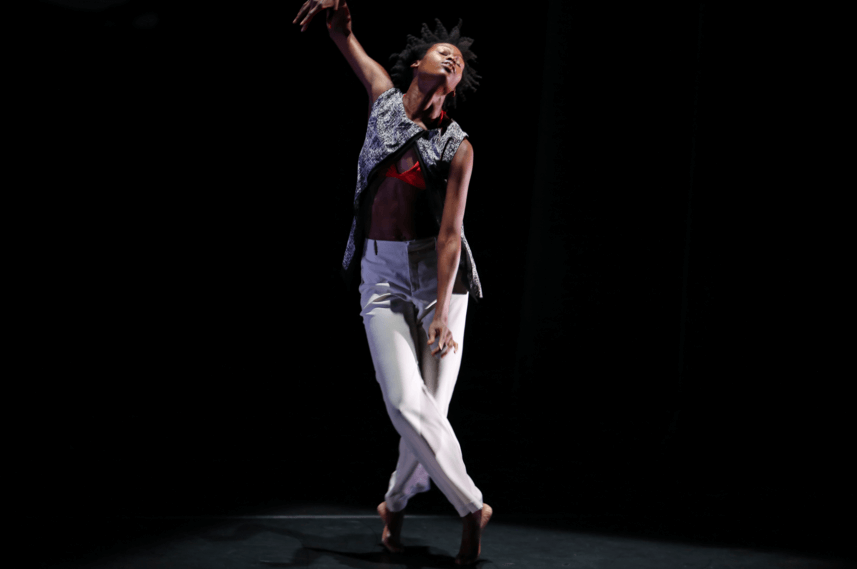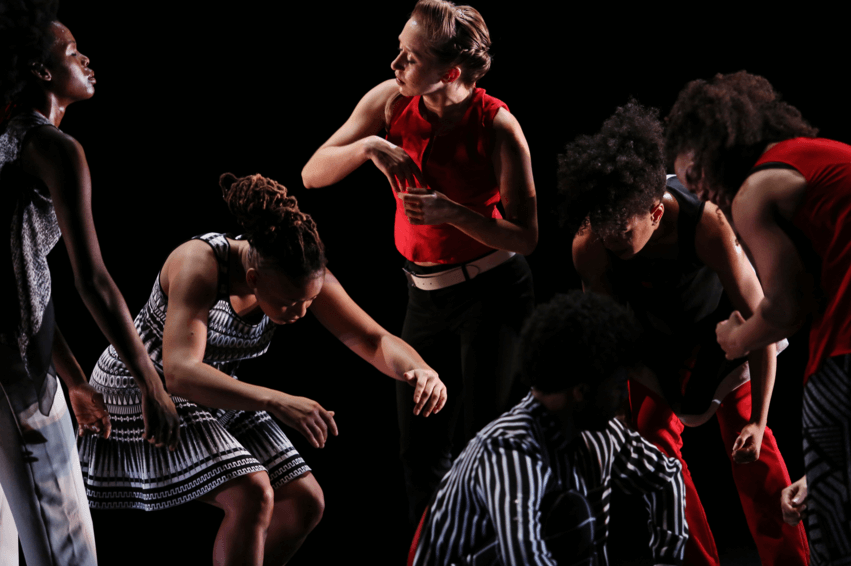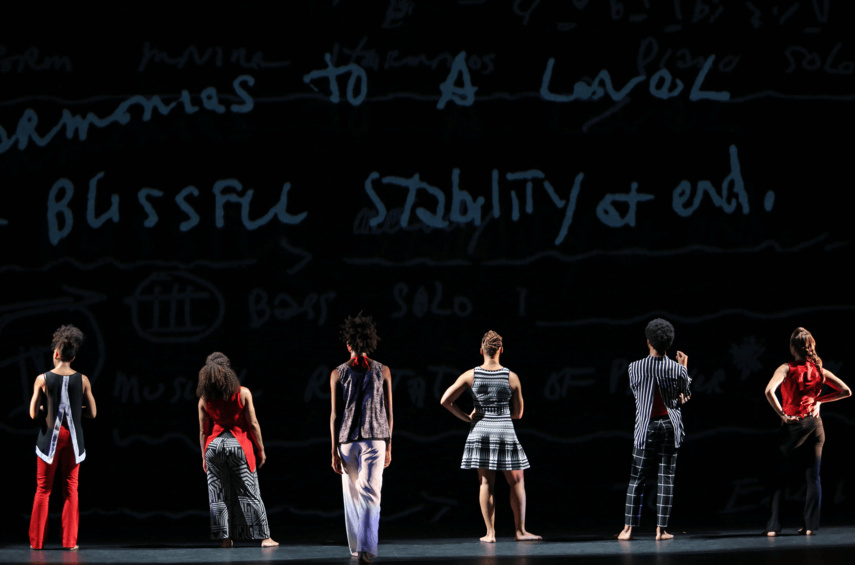Urban Bush Women’s Walk with ‘Trane Is the Triumph of BAM’s Next Wave Festival

photos by Julieta Cervantes, courtesy of BAM
Brooklyn’s own Urban Bush Women premiered their Coltrane inspired work last week at Brooklyn Academy of Music. On the 50th anniversary of Coltrane’s A Love Supreme and the 30th anniversary of Urban Bush Women’s company work, Walking With ‘Trane was delivered as a concept album (Side A and Side B). Inspired by the life and work of jazz saxophonist John Coltrane, this evening length dance demonstrated a rare commitment to resolution. This commitment is not at the cost of flattening or simplifying content, but rather, in the spirit of dynamically finding resolution in what reigns supreme: joy, art, and spirituality. This piece very well may be the most important work of BAM’s Next Wave Festival Season.
Opening with a lone dancer center-stage, a fog-like haze and a distant humming fill the space. She begins slowly, and then begins again, circles swinging through her head and pelvis, catching in her torso and often finishing with a sway of the leg. Another dancer joins, and soon others, as the distant hum builds to an almost deafening decipal. The sound breaks and the jazz comes in; bodies shake and groove in all the ways you forgot a body could. Solo (seemingly improvisational) work by each dancer explore the limit of that shake, of this groove: the result is getting to see the body listening. An arm holds steady in the front so the spine can whip, causing cascading isolations from head to toe and building to an incredibly impressive rhythmic play of the feet. This sole/soul of the foot/body playfully and powerfully mesmerized the audience, all of whom leaned forward in their seats.


This slow build, from contemplation to a more rhythmic conclusion, appeared many times throughout the work. Fast feet, blue streamers, and moving video projections were the speed dials from which the work moved from hot to cool to hot. These seamless transitions brought the the audience from a deep groove, to the beautiful repose of the silent reach of an open palm, all in mere minutes. Vocalizations also supported these transitions, as one dancer demonstrated with her vocalized Coltrane; for quite a while we see her body buzz with the building of a closed-mouth hum, until finally the lips open and the air is victoriously unleashed.
The second section, or “Side B”, has a more biological feel, with static projections of a saxophone, piano keys, music written by Coltrane himself on the back wall. Live, onstage accompaniment by George Caldwell opens this section and is slightly cooler, and more contemplative. Blocks of light onstage create a Salvador Dali-esque landscape, with curiosities unfolding amongst the group. A long trio unfolds, taking it’s time to wind up and down. They pull and retrieve each other, as well as catching and riding the momentum passed through the isolations they perform in their own bodies. The duration of this exchange is deeply insistent, perhaps even politically so—the insistence that time be taken, that the body’s resilience and resolution be seen—it is a way of insisting upon freedom. In the final moments, the dancers read the writing on the wall: It says “blissful stability at end.” An audible gasp of joy erupted in crowd as the lights went out.


You might also like 




















